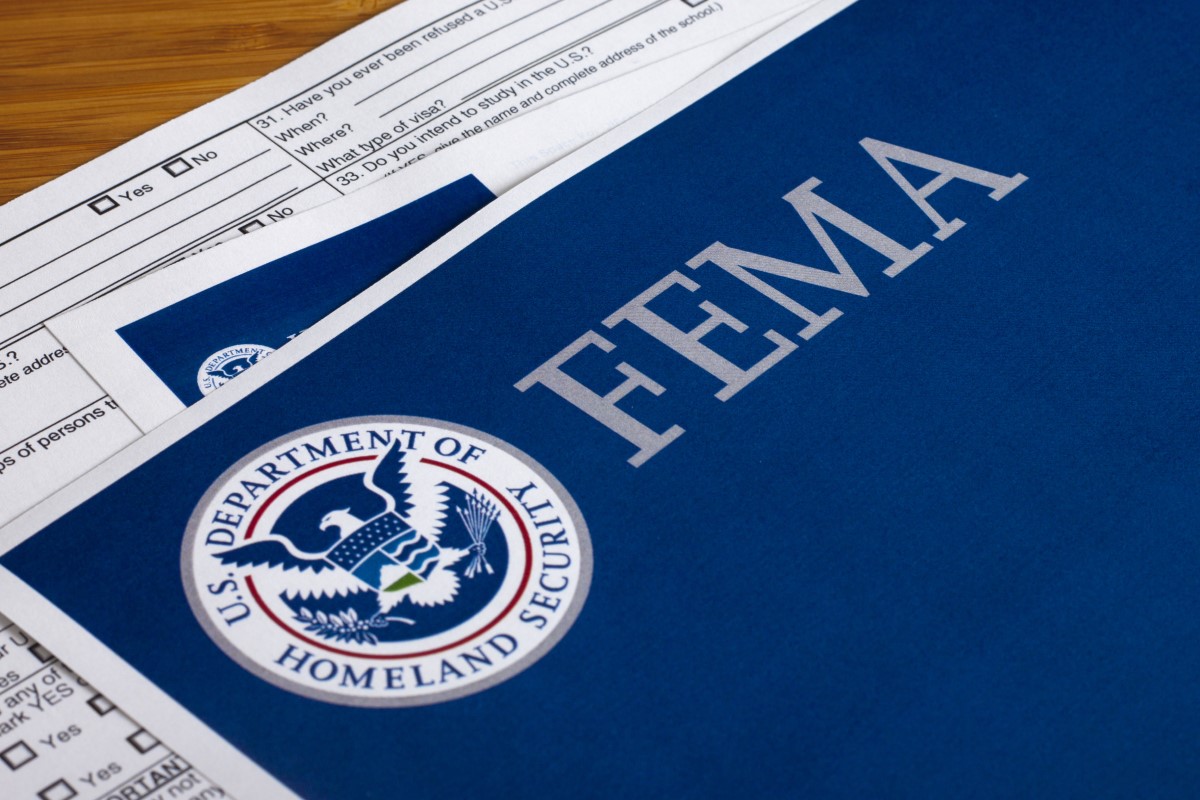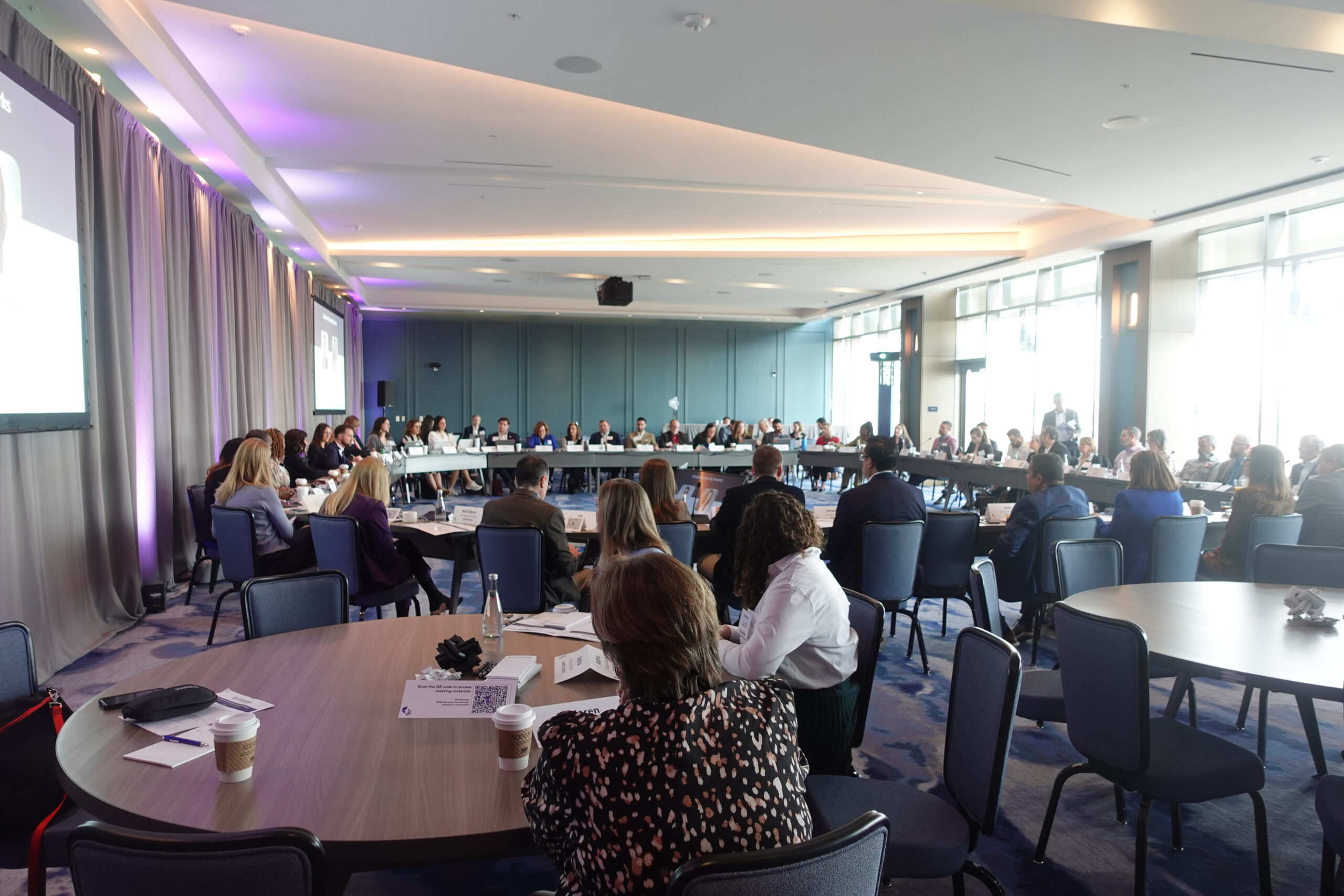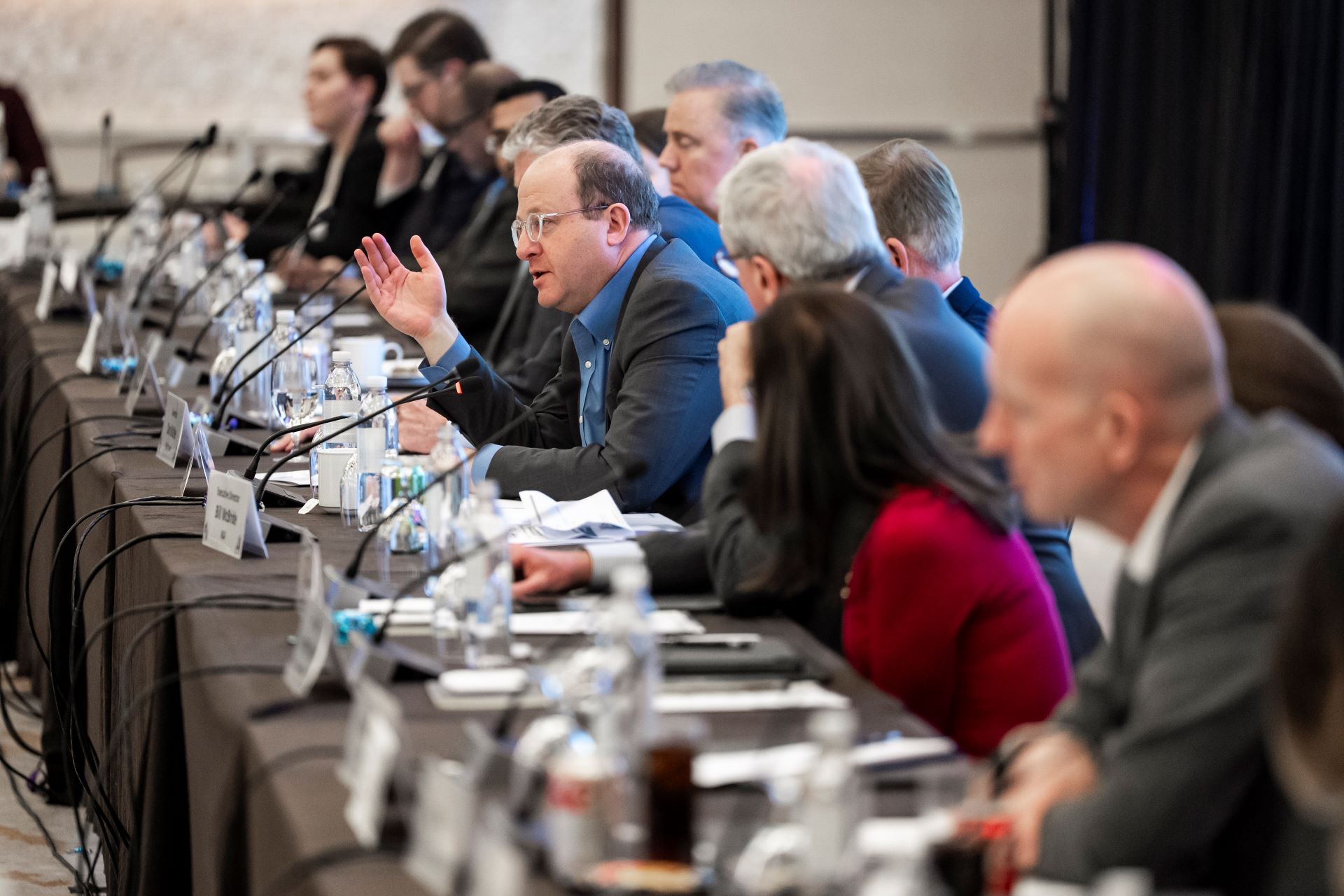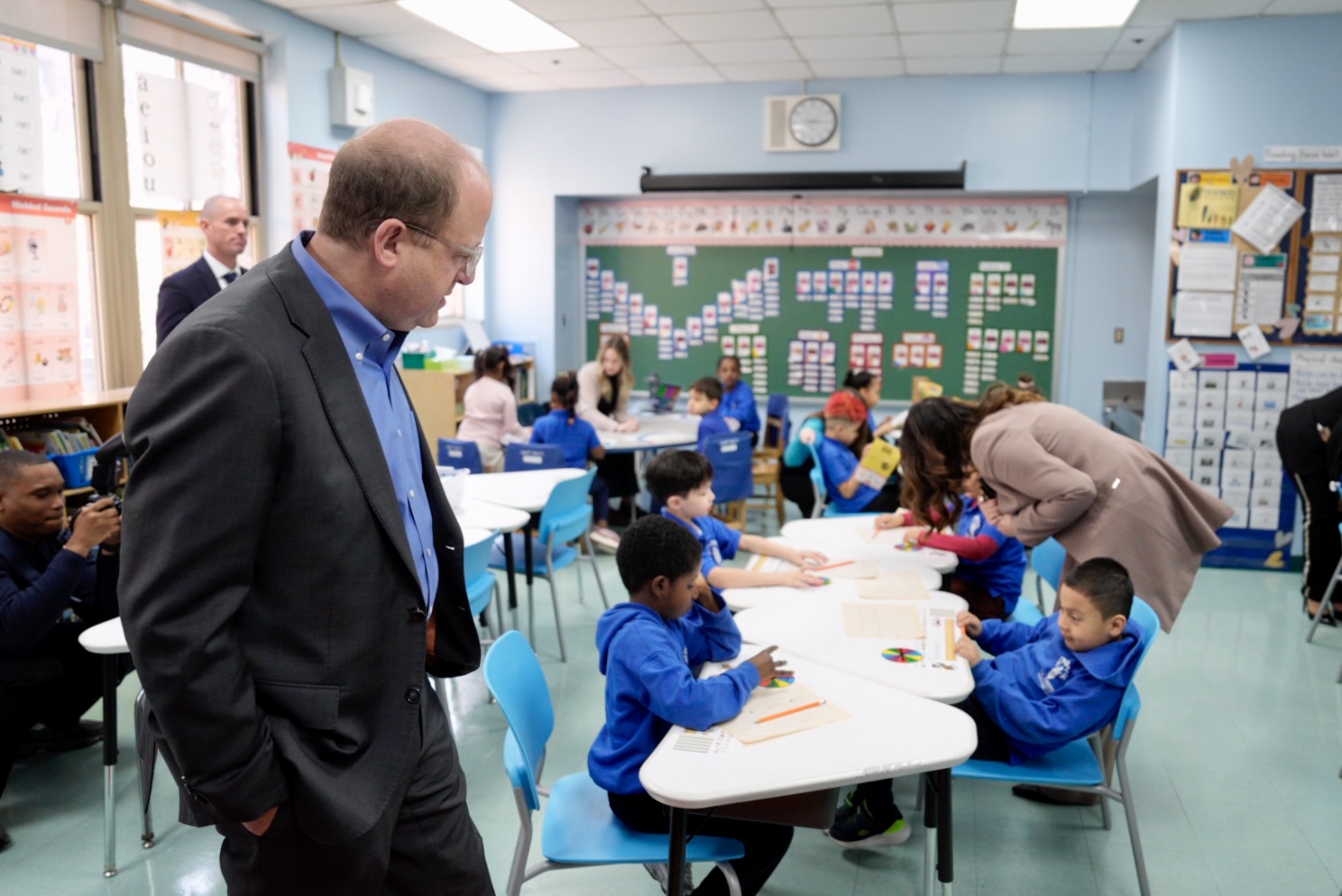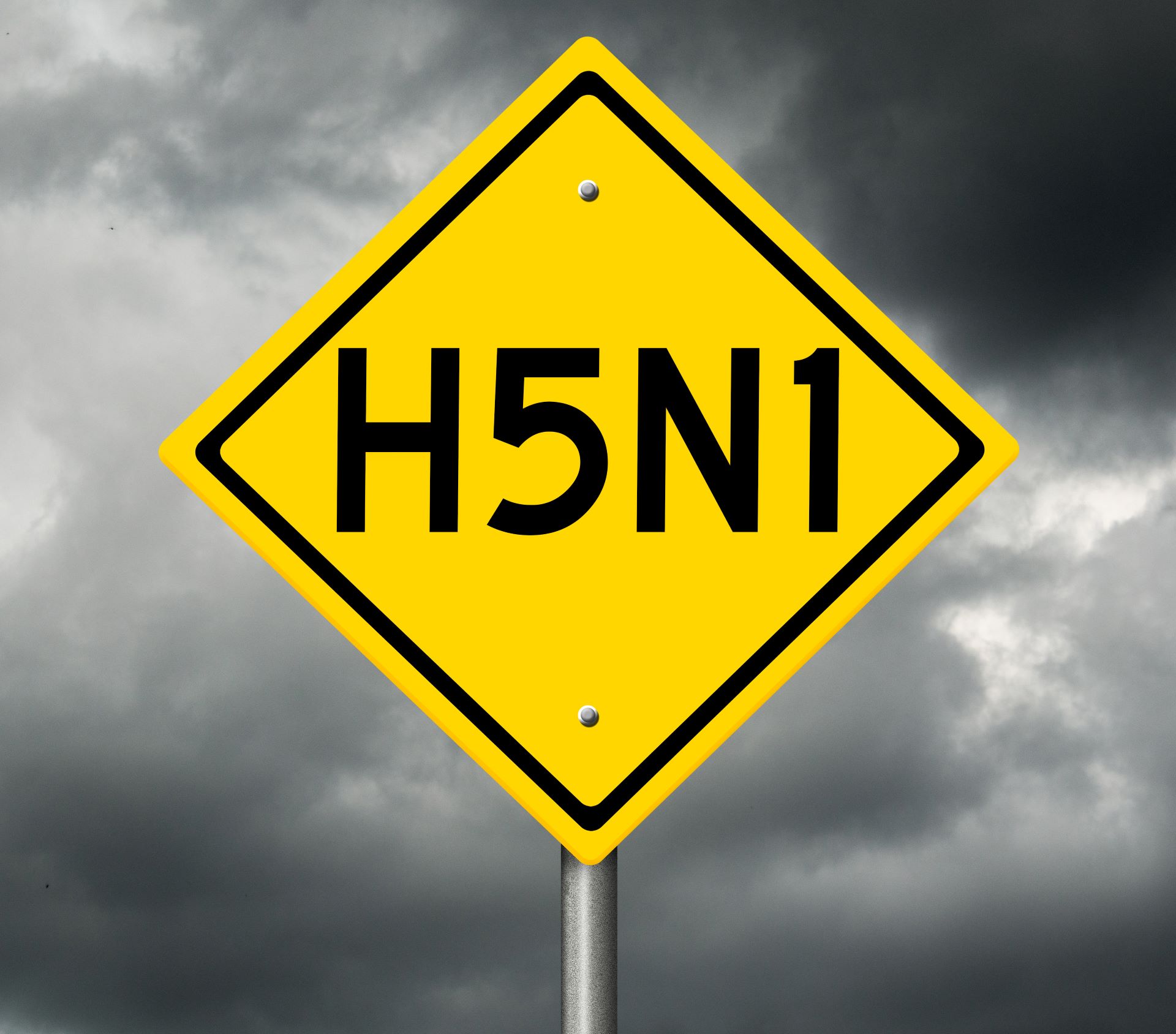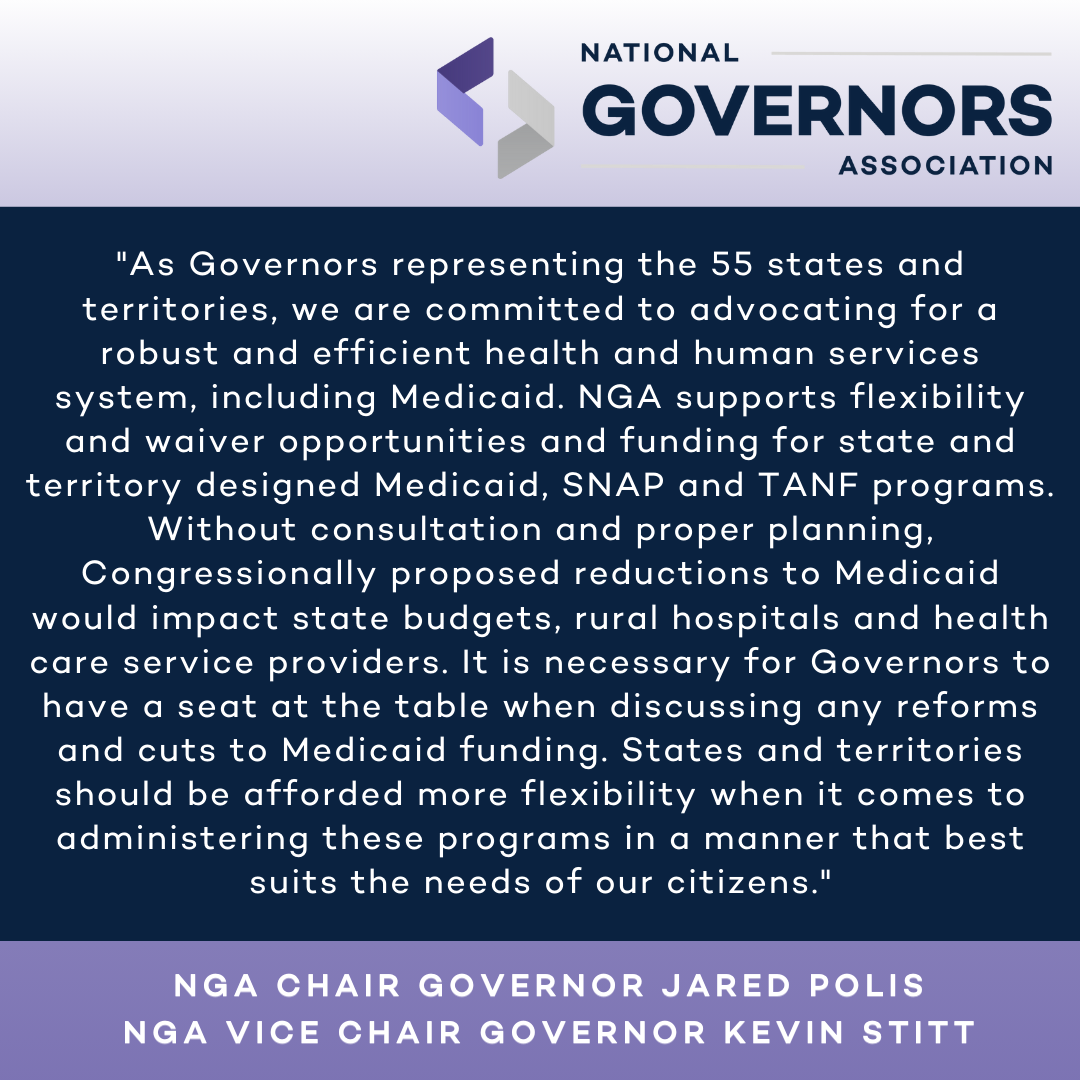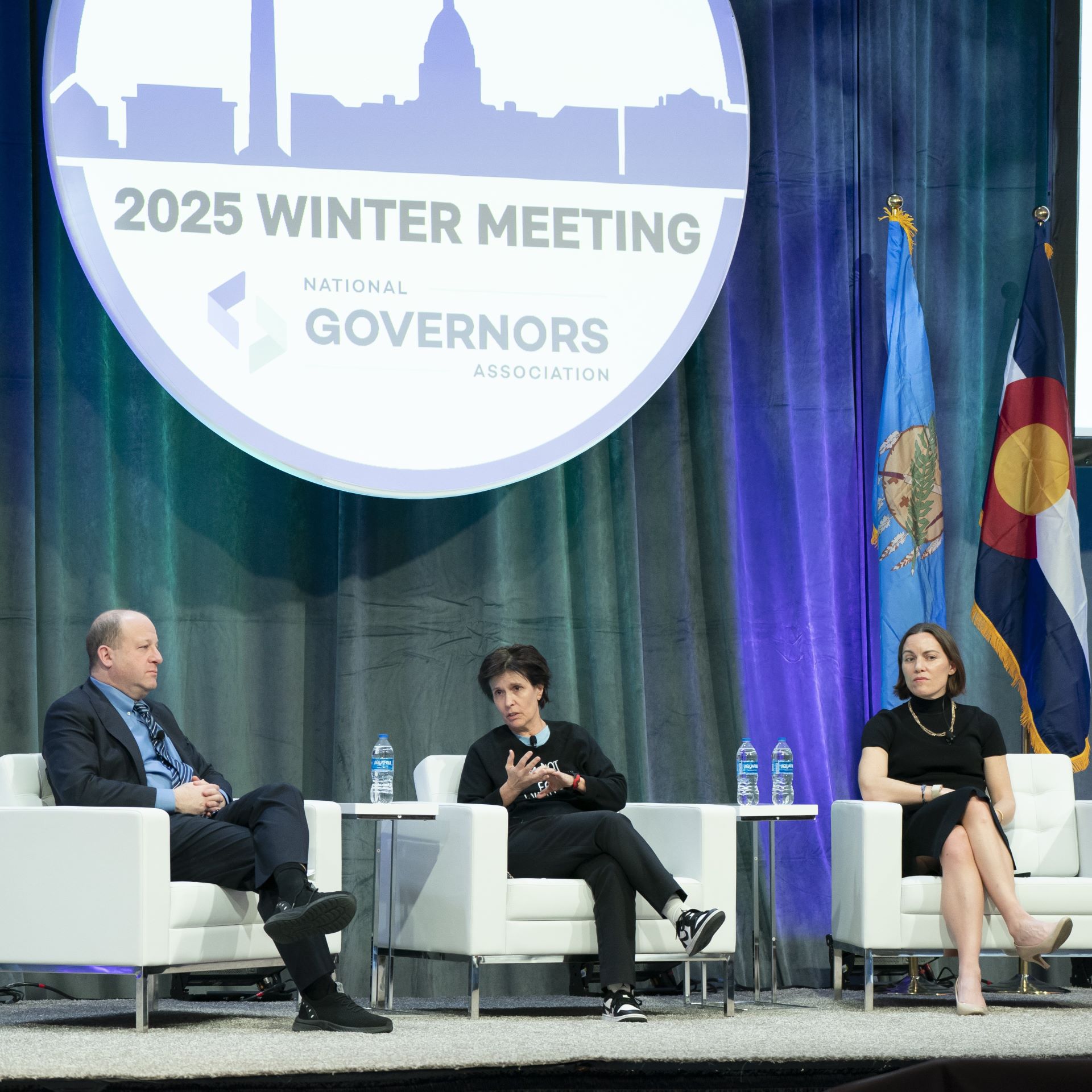This page lists select actions through 31 July 2020 as Governors responded to the novel coronavirus. It is not intended to be exhaustive but is meant to highlight key actions and resources that may inform other states and territories. A full archive of NGA COVID-19 related material can be found here.
California coronavirus resource page.
- February 2, 2020—The California Department of Public Health activated its Public Health’s Emergency Operations Center to respond to COVID-19 and coordinate with federal authorities quarantining passengers returning to the U.S. from Hubei Province, China, through SFO and LAX.
- March 2, 2020—Governor Newsom is requesting emergency action from the legislature to make available up to $20 million for the COVID-19 response.
- March 3, 2020—California’s Public Health Department announced that it received federal approval to use some of its emergency planning reserves of 21 million N95 filtering facepiece masks in certain low-risk situations to relieve pressure on the supply chain. March 4, 2020—Governor Newsom declared a state of emergency to help state prepare for broader spread of COVID-19.
- March 5, 2020 – California Employee Development Department announced support services to individuals affected by COVID-19 in California.
- March 5, 2020 – the California Department of Insurance issued similar direction providing cost free medically necessary testing for an additional 2 million Californians.
- March 7, 2020 – California officials issued updated guidance to schools, colleges and universities, event organizers and public health officials as they plan for further spread of COVID-19.
- March 11, 2020—Governor Newsom announced that gatherings larger than 250 people should be cancelled or postponed.
- March 11, 2020 – California public health officials issued an updated policy on gatherings to protect public health and slow the spread of COVID-19. The state’s public health experts have determined that gatherings should be postponed or canceled across the state until at least the end of March.
- March 12, 2020 – California issued a new executive order further enhancing California’s ability to respond to the COVID-19 pandemic. The Governor’s order:
- Waives the one-week waiting period for people who are unemployed and/or disabled as a result of COVID-19;
- Delays the deadline for state tax filing by 60 days for individuals and businesses unable to file on time based on compliance with public health requirements related to COVID-19 filings;
- Directs residents to follow public health directives and guidance, including to cancel large non-essential gatherings that do not meet state criteria;
- Readies the state to commandeer property for temporary residences and medical facilities for quarantining, isolating or treating individuals;
- Allows local or state legislative bodies to hold meetings via teleconference and to make meetings accessible electronically; and
- Allows local and state emergency administrators to act quickly to protect public health.
- March 13, 2020 – The Governor released information including support for workers via unemployment insurance (UI) and disability insurance (DI) who have to quarantine or experience reduced hours due to coronavirus.
- March 13, 2020 – The Governor issued an executive order ensuring California public school districts retain state funding even in the event of physical closure. The order directs school districts to use those state dollars to fund distance learning and high-quality educational opportunities, provide school meals and, as practicable, arrange for the supervision for students during school hours.
- March 15, 2020 – The Governor called for all bars, wineries, nightclubs and brewpubs to close and urged seniors and people with chronic health conditions to isolate themselves at home in a bid to contain the spread of the coronavirus.
- March 15, 2020 – The Governor announced pilot programs in two counties that will begin mobile testing in the next 24-48 hours.
- March 16, 2020 – The Governor issued an executive order that authorizes local governments to halt evictions for renters and homeowners, slows foreclosures, and protects against utility shutoffs for Californians affected by COVID-19.
- March 16, 2020 – The Governor issued an executive order directing state health and social services agencies to redirect resources and staff to health care, residential and non-residential facilities licensed by the state, focusing on providing technical assistance and supporting compliance with core health and safety requirements for caregivers and the cared for.
- March 16, 2020 – The Governor asked the California Legislature for emergency legislative action to combat COVID-19.
- March 17, 2020 – The Governor signed an executive order to ease restrictions on commercial drivers engaged in support of emergency relief efforts.
- March 17, 2020 – The Governor directed the National Guard to be prepared to perform humanitarian missions across the state including food distribution, ensuring resiliency of supply lines, as well as supporting public safety as required.
- March 17, 2020 – The Governor signed emergency legislation providing up to $1 billion in funding to help California fight COVID-19. The package also provides $100 million in funding for personal protective equipment and cleaning for schools that remain open. It also allows schools to maintain funding despite service disruptions.
- March 18, 2020 – The Governor authorized $150 million in funding to protect homeless Californians from COVID-19.
- March 18, 2020 – The Governor issued an executive order to suspend standardized testing for students.
- March 18, 2020 – The Governor announced the launch of a new COVID-19 public awareness campaign to provide useful information to Californians and inform them of actions they can take to further prevent the spread of the virus.
- March 18, 2020 – The Governor issued an executive order extending the eligibility period for important safety net services to ensure that California’s most vulnerable residents can continue to receive health care, food assistance and in-home supportive services in a timely manner.
- March 19, 2020 – The Governor issued an order for all individuals living in the state to stay home or at their place of residence.
- March 20, 2020 – The Governor announced the deployment of California National Guard members to provide short-term food security to isolated and vulnerable residents.
- March 20, 2020 – The Governor issued an executive order allowing vote-by-mail in three upcoming special elections and extending deadlines for the presidential primary canvass.
- March 21, 2020 – The Governor issued an executive order giving the state the ability to increase the health care capacity in clinics, mobile health care units, and adult day health care facilities. The executive order also allows local governments more flexibility to utilize the skills of retired employees and reinforces the importance of the delivery of food, medicine, and emergency supplies.
- March 21, 2020 – The Governor directed more than $42 million in emergency funding to expand California’s health care infrastructure and secure equipment and services.
- March 22, 2020 – The Governor announced President Donald Trump has approved California’s Presidential Major Disaster Declaration.
- March 23, 2020 – The Centers for Medicare & Medicaid Services (CMS) approved California’s request for a Section 1135 Medicaid waiver. The approved waiver enables California to provide flexibilities in Medicaid provider screening and enrollment, lift prior authorization requirements, allow for reimbursement facility services in alternative settings, and extend fair hearing and appeals timelines.
- March 24, 2020 –The Governor issued an executive order directing the California Department of Corrections and Rehabilitation (CDCR) Secretary to temporarily halt the intake and/or transfer of inmates and youth into the state’s 35 prisons and four youth correctional facilities.
- March 24, 2020 – The California Infrastructure and Development Bank (IBank) offered the following loan programs for small businesses affected by disasters in California:
- Disaster Relief Loan Guarantee Program which provides loan guarantees of up to $1 million for small business borrowers in declared disaster areas; and
- Jump Start Loan Program to help low-wealth entrepreneurs in the declared disaster/emergency areas.
- March 24, 2020 – The California Employment Development Department announced employers experiencing a hardship may request up to a 60-day extension to file their state payroll reports and/or deposit state payroll taxes without penalty or interest.
- March 24, 2020 –The Governor announced a financial relief package with the following provisions:
- Financial institutions will offer mortgage payment forbearances of up to 90 days to borrowers;
- Financial institutions will not report derogatory tradelines (e.g., late payments) to credit reporting agencies, consistent with applicable guidelines;
- For at least 60 days, financial institutions will not initiate foreclosure sales or evictions, consistent with applicable guidelines; and
- For at least 90 days, financial institutions will waive or refund for select fees and charges.
- March 24, 2020 –The Governor announced a financial relief package with the following provisions:
- Financial institutions will offer mortgage payment forbearances of up to 90 days to borrowers;
- Financial institutions will not report derogatory tradelines (e.g., late payments) to credit reporting agencies, consistent with applicable guidelines;
- For at least 60 days, financial institutions will not initiate foreclosure sales or evictions, consistent with applicable guidelines; and
- For at least 90 days, financial institutions will waive or refund for select fees and charges.
- March 27, 2020 – The Governor issued an executive order banning the enforcement of eviction orders for renters through May 31, 2020.
- March 27, 2020 – The Governor issued an executive order to enhance the authority of California’s Judicial Branch to take emergency action to conduct business and continue to operate.
- March 27 – The California Labor & Workforce Development Agency removed waiting periods for unemployment and disability insurance and developed a chart of benefits available for workers affected by COVID-19.
- March 29, 2020 – The Governor announced leading social media companies, businesses, leaders and individuals from across the state have leapt into action to partner and support the COVID-19 public awareness campaign.
- March 30, 2020 – The Governor issued an executive order that will provide tax, regulatory and licensing extensions for businesses.
- March 30, 2020 – The Governor issued an executive order that will temporarily expand the health care workforce and allow health care facilities to staff at least an additional 50,000 hospital beds known as the California Health Corps.
- March 31, 2020 – The Governor announced the “Stay Home. Save Lives. Check In.” campaign urging Californians to help combat social isolation and food insecurity among Californians who are over the age of 65.
- April 1, 2020 – The Governor issued an executive order that allows for the immediate use of funds from the state’s Disaster Response-Emergency Operations Account.
- April 1, 2020 – The Governor announced an agreement between teachers, classified employees, school boards, superintendents, and principals to work together to provide distance learning to students as a result of school closures.
- April 2, 2020 – The Governor issued an executive order that will restrict water shutoffs to homes and small businesses.
- April 2, 2020 – The Governor announced that the state is allocating $50 million to the California Infrastructure and Economic Development Bank for loan guarantees to small businesses to help eliminate barriers to capital for individuals who do not qualify for federal funds, including low wealth and undocumented immigrant communities.
- April 2,2020 – In response to a large rise in unemployment claims, the Governor announced that small businesses will be able to defer up to $50,000 in owed sales tax for up to one year to help stabilize them financially until federal aid is available.
- April 3, 2020 – The Governor issued an executive order to expand protections to medical providers as they amplify the use of video chats and similar applications to provide routine and non-emergency medical appointments.
- April 3, 2020 – The Governor issued an executive order expanding consumer protection against price gouging.
- April 3, 2020 – The Governor announced that California has become the first state in the nation to secure FEMA approval to provide safe isolation capacity for tens of thousands of people experiencing homelessness.
- April 3, 2020 – The Governor announced the launch of Project Roomkey, a first-in-the-nation initiative to secure hotel and motel rooms to protect people experiencing homelessness.
- April 4, 2020 – The Governor issued an executive order that will facilitate child care for children of essential critical infrastructure workers by allowing the California Department of Education and California Department of Social Services the flexibility to waive certain programmatic and administrative requirements.
- April 4, 2020 – The Governor announced the launch of a new website, covid19supplies.ca.gov, to get critical medical supplies.
- The Governor also announced the COVID-19 Testing Task Force, a public-private collaboration that will work with stakeholders across the state to quickly and significantly boost California’s testing capacity.
- April 6, 2020 – The Governor announced that California will loan 500 state-owned ventilators to the Strategic National Stockpile inventory.
- April 7, 2020 – The Governor issued an executive order that provides additional support for older adults and vulnerable young children by allowing for a 60-day waiver for In-Home Supportive Services (IHSS) program caseworkers to continue their work.
- April 7, 2020 – The Governor issued an executive order to help the state procure necessary medical supplies.
- April 9, 2020 – The Governor issued an executive order to address upcoming local elections requiring all mail-in ballot elections.
- April 9, 2020 – The Governor announced California workers who are receiving unemployment benefits will begin receiving an extra $600 on top of their weekly amount, as part of the new Pandemic Additional Compensation (PAC) initiated by the CARES Act.
- April 9, 2020 – The Governor announced a new program to provide doctors, nurses and other critical front-line health care workers access to no-cost or low-cost hotel rooms.
- April 9, 2020 – The Governor announced a partnership with United Airlines, which will provide free, round-trip flights for volunteer medical professionals from across California and the country who join the state’s health care workforce.
- April 10, 2020 – The Governor announced the release of $100 million to support child care services, and to support child care providers who are stepping up to serve essential infrastructure workers and vulnerable populations and their children during this critical time.
- April 10, 2020 – The Governor announced 600 nurses have been retrained to support facility compliance with COVID-19 guidance and to assist facilities with positive cases.
- The state will call each facility daily to understand needs and get early warning of any symptomatic patients as well.
- April 13, 2020 – The Governor announced $42 million in new investments to protect younger residents who are at heightened risk for abuse and mistreatment. The Governor is making more than $27 million available to help families stay together, nearly $7 million to support social workers and $3 million to support Family Resource Centers.
- April 13, 2020 – The Governor announced a Western States Pact with Oregon Governor Kate Brown and Washington Governor Jay Inslee to focus on reopening their economies and controlling COVID-19 into the future.
- April 14, 2020 – The Governor signed an executive order that addresses the release and reentry process at the Division of Juvenile Justice (DJJ) so that eligible youth serving time at DJJ can be discharged safely and expeditiously.
- April 14, 2020 – The Governor outlined six critical indicators the state will consider before modifying the stay-at-home order and other interventions.
- April 15, 2020 – The Governor issued an executive order taking the following actions:
- Expanding call center hours at the Employment Development Department (EDD) to better assist Californians with unemployment insurance applications; and
- Implementing a one-stop shop for those applying for Pandemic Unemployment Assistance, including the self-employed and independent contractors.
- April 15, 2020 – The Governor announced the allocation of $75 million in statewide Disaster Relief Assistance funding to provide financial support for immigrant workers.
- April 15, 2020 – The Governor announced the release of an immigrant resource guide to provide information about COVID-19 related assistance, including public benefits, that are available to immigrant Californians.
- April 16, 2020 – The Governor issued an executive order taking the following actions allowing:
- The California State University system will be able to waive hearing requirements to be able to make adjustments to admissions criteria for students applying this coming fall to enter as freshmen in the fall of 2021;
- The California Department of Justice will develop procedures to perform name-based background checks to protect health and safety and avoid delays in processing employment for critical sectors, such as health care services and care and support for vulnerable populations; and
- Federal stimulus checks will flow directly to custodial parents owed back child support payments and will additionally allow for commercially licensed food trucks to be able to temporarily operate in roadside rest areas for a period of 60 days, to ensure essential infrastructure workers have access to food.
- April 16, 2020 – The Governor issued an executive order to support California workers from large employers in the food sector industry impacted by the COVID-19 pandemic with two weeks of paid sick leave.
- Also providing health and safety standards to increase worker and customer protection by permitting workers at food facilities to wash their hands every 30 minutes, or as needed, to increase proper sanitation measures.
- April 17, 2020 – The Governor announced the formation of a state Task Force on Business and Jobs Recovery that will work to develop actions government and businesses can take to help residents recover swiftly and safely.
- April 17, 2020 – The Governor issued an executive order allowing for temporary waivers for county child welfare agencies and probation departments to perform necessary functions using alternative processes other than face-to-face interactions.
- April 18, 2020 – The Governor announced the state has reached agreement with the Motel 6 chain to make available all of its corporate-owned locations to counties with a master agreement template.
- April 20, 2020 – The Governor announced commitments from companies, business leaders and philanthropists to provide Internet access for hundreds of thousands of households as well as laptops, Chromebooks and tablets for over 70,000 students.
- April 20, 2020 – The California Public Utilities Commission announced $30 million in funding to help school districts ensure that families have Internet access and computing devices for distance learning.
- April 20, 2020 – The California State Transportation Agency announced a partnership with the City of Sacramento to convert and deploy seven transit buses to be used as “super hotspots” for enhanced Internet connectivity.
- April 21, 2020 – The Governor announced California Volunteers’ #CaliforniansForAll service initiative to connect Californians with safe volunteer opportunities and encourage those unable to physically volunteer to think creatively about ways to make a difference in their communities.
- April 22, 2020 – The Governor announced plans to allow hospitals and health systems to resume delayed medical care such as heart valve replacements, angioplasty and tumor removals, and key preventive care services, such as colonoscopies.
- April 23, 2020 – The Governor issued an executive order modifying previous orders, including the granting of a 60-day extension for customers on several Department of Motor Vehicles deadlines, including those for recently expired drivers’ licenses and identification cards, to reflect public compliance with the COVID-19 stay-at-home order.
- April 23, 2020 – The Governor issued an executive order offering flexibility to the California Department of Health Care Services (DHCS) and Medi-Cal providers on a variety of deadlines and requirements to ensure continuity of service to patients and customers.
- April 23, 2020 – The Governor issued an executive order requiring local education agencies, including school districts, to publish a written report to their communities explaining how they have responded to COVID-19, including steps taken to deliver distance learning and meet the needs of disadvantaged students.
- April 23, 2020 – The Governor announced that most private student loan servicers have agreed to provide payment and other relief to borrowers, including more than 1.1 million Californians with privately held student loans.
- April 23, 2020 – The Governor issued an executive order that exempts garnishment for any individuals receiving federal, state or local government financial assistance in response to the COVID-19 pandemic.
- April 24, 2020 – The Governor announced the launch of the first-in-the nation meal delivery program, a partnership to make wellness check-in calls, and the expansion of Friendship Line California to help combat social isolation. These actions will support the approximately 1.2 million Californians over the age of 65 who live alone.
- April 29, 2020 – The Governor announced the expansion of the Farm to Family program to help meet the growing demand at California food banks and CalFresh and EBT programs, including new Pandemic-EBT, and EBT for online purchasing.
- April 30, 2020 – The Governor issued an executive order today that will allow adults to obtain marriage licenses at the discretion of their local county clerk, through videoconferencing.
- April 30, 2020 – The Governor announced a new online portal to expand childcare subsidies and after-school programs for essential workers and vulnerable families.
- April 30, 2020 – The Governor ordered all beaches and state parks in Orange County to temporarily close on April 30, after violations of the state’s physical distancing rules.
- May 1, 2020 – The Governor issued an executive order that temporarily broadens the capability of counties to enroll persons into the California Work Opportunity and Responsibility to Kids (CalWORKs) program using various eligibility verification methods due to social distancing requirements.
- May 4, 2020 – The Governor issued an executive order directing the State Public Health Officer to establish criteria to determine whether and how, in light of local conditions, local health officers may implement public health measures less restrictive than the statewide public health directives.
- May 4, 2020 – The Governor announced a partnership with the University of California, San Francisco and University of California, Los Angeles to immediately begin training workers for a landmark contact tracing program that will help contain the ongoing COVID-19 pandemic while the state looks to modify the stay at home order.
- May 4, 2020 – The Governor announced that based on the state’s progress in meeting metrics tied to indicators, the state can begin to move into the early phase of Stage 2 of reopening this Friday, May 8 allowing for gradual reopening of lower-risk workplaces with adaptations including bookstores, clothing stores, florists and sporting goods stores.
- May 6, 2020 – The Governor issued an executive order that creates a time-limited rebuttable presumption for accessing workers’ compensation benefits applicable to residents who must work outside of their homes during the stay at home order.
- May 6, 2020 – The Governor issued an executive order that waives penalties for property taxes paid after April 10 for taxpayers who demonstrate they have experienced financial hardship through May 6, 2021.
- May 6, 2020 – The Governor announced a new site that will allow residents to find testing sites statewide by their zip code.
- May 7, 2020 — The Governor released updated industry guidance – including for retail, manufacturing and logistics – to begin reopening with modifications that reduce risk and establish a safer environment for workers and customers.
- May 8, 2020 – The Governor issued an executive order that extends the following critical deadlines:
- Certification requirements for public school project inspectors and Certified Access Specialists;
- State Marshal to publish lists of building materials requirements and registration renewals;
- Expiration dates for notaries public;
- Retired peace officers to temporarily be reemployed for up to a year they left the agency in good standing; and
- Procedural deadlines of the Department of Industrial Relations, including the deadline for workers to file wage claims with the Labor Commissioner; the deadline for employers to appeal Cal/OSHA citations; and the deadline for Workers’ Compensation Administrative Law Judges to issue decisions.
- May 8, 2020 – The Governor issued an executive order requiring that each county’s elections officials send vote-by-mail ballots for the November 3, 2020 General Election to all registered voters.
- May 8, 2020- The Centers for Medicare and Medicaid Services (CMS) approved California’s additional request for a Medicaid 1135 waiver. The waiver allows California to lift prior authorization requirements, waive consent requirements for Home and Community-Based Services (HCBS), and to allow for HCBS in additional settings
- May 11, 2020 – The Governor along with governors and legislative leaders from five western states requested $1 trillion in direct and flexible relief to states and local governments.
- May 12, 2020 – The Governor announced that the Department of Consumer Affairs and State Board of Pharmacy will allow pharmacists to collect specimens for COVID-19 tests and order tests for consumers.
- May 12, 2020 – The Governor announced the state has also created a new “Medi-Nurse” line available for Medi-Cal patients without a health plan (fee for service) and uninsured Californians.
- May 14, 2020 – The Governor submitted his 2020-21 May Revision budget proposal to the Legislature – a balanced plan to close a budget gap of more than $54 billion brought on by the COVID-19 recession.
- May 18, 2020 – The Governor announced the easing of criteria for counties that want to reopen faster than the rest of the state. Counties must demonstrate stable hospitalization rates and low numbers of positive cases, but no longer are required to meet the criteria of no deaths in the last 14 days.
- May 19, 2020 – The Governor issued an executive order addressing a variety of issues relating to domestic violence, Cal Grant applicant requirements, Energy Commission funding deadlines, and extending claims for reimbursement by local governments.
- May 22, 2020 – The Governor announced the launch of California Connected, the state’s comprehensive contact tracing program and public awareness campaign.
- May 25, 2020 – The Governor announced counties can now begin re-opening houses of worship and in-store shopping for retail.
- May 26, 2020 – The Governor announced counties can choose to reopen hair salons and barbershops with certain modifications.
- May 29, 2020 – The Governor issued an executive order extending authorization for local governments to halt evictions for renters impacted through July 28.
- May 29, 2020 – The Governor and First Partner announced a series of new initiatives to support victims of domestic violence amidst the COVID-19 pandemic, including $5 million in state funding and a new partnership to secure private funding with $3 million in seed funding.
- May 29, 2020 – The Governor and First Partner announced the state is partnering with the California Partnership to End Domestic Violence (CPEDV), Airbnb, and Uber to provide free accommodation and transportation to victims of domestic violence.
- June 3, 2020 – The Governor issued a proclamation declaring a statewide General Election on Tuesday, November 3, 2020, and issued an executive order to ensure that Californians can exercise their right to vote in a safe, secure, and accessible manner during the upcoming election.
- June 5, 2020 – The Governor issued an executive order that will help increase the availability of over-the-counter drugs, such as hand sanitizer, and medical devices, such as respirators, ventilators and masks.
- June 8, 2020 – The Governor announced that California-based BYD North America has received certification from the National Institute for Occupational Safety and Health (NIOSH) to produce N95 respirators for the state.
- June 15, 2020 – The Governor issued an executive order taking the following actions:
- Extending waivers temporarily broadening the capability of counties to enroll persons into the California Work Opportunity and Responsibility to Kids (CalWORKs) program; and
- Extending permission for commercially-licensed food trucks to operate in roadside rest areas.
- June 22, 2020 – The Governor issued an executive order extends a waiver that allows retailers to temporarily pause in-store redemption of beverage containers.
- The order also temporarily suspends the requirement for recycling centers to hold a minimum number of hours of operation.
- June 18, 2020 – The Governor issued a mandate requiring residents to wear face coverings in common and public indoor spaces and outdoors when physical distancing is not possible.
- June 24, 2020 – The State Superintendent of Public Instruction, First Partner, and State Board President announced the launch of Advance Social and Emotional Learning (SEL) to engage teachers, school leaders, and families across the state how they can address the social and emotional needs of students both in response to COVID-19 and over the long term.
- June 25, 2020 – The Governor issued a proclamation of a budget emergency to make additional resources available to fund the state’s ongoing emergency response.
- June 25, 2020 – The Governor unveiled the COVID Assessment Tool, an open-source “model of models” that will allow scientists, researchers, and public to access the most current data and model future scenarios.
- The Governor also directed state agencies and departments to make accessible nearly all COVID-19 data and information.
- June 29, 2020 – The Governor signed the 2020 Budget Act – a $202.1 billion spending plan that strengthens emergency response, protects public health and safety, and promotes economic recovery while closing a $54.3 billion budget shortfall caused by the COVID-19 recession.
- June 30, 2020 – The Governor issued an executive order taking the following actions:
- Extending authorization for local governments to halt evictions for renters impacted by the COVID-19 pandemic, through September 30.
- Extending provisions in earlier orders which allow adults to obtain marriage licenses via videoconferencing rather than in-person during the pandemic;
- Waiving eligibility re-determinations for Californians who participate in Medi-Cal, to ensure they maintain their health coverage; suspend face-to-face visits for eligibility for foster care;
- Extending waivers temporarily broadening the capability of counties to enroll persons into the California Work Opportunity and Responsibility to Kids (CalWORKs) program;
- Extending provisions allowing for mail-in renewals of driver’s licenses and identification cards, to limit in-person transactions at the Department of Motor Vehicles; and
- Extending timeframes related to the payment of real estate license application and renewal fees and continuing education requirements for licensees.
- June 30, 2020 – The Governor announced the Homekey initiative that will spend upwards of $1 billion to purchase hotels, motels, vacant apartment buildings and tiny homes and provide services to the homeless.
- July 2, 2020 – The Governor announced the “Wear A Mask” public awareness campaign encouraging residents to use face coverings.
- July 6, 2020 – The Governor ordered a second shutdown of restaurants and indoor business in more than 19 counties that have seen a recent surge in cases.
- July 9, 2020 – The Governor announced new efforts to protect emergency personnel and evacuees from the virus during wildfires including the hiring of additional firefighters, holding virtual briefings, and updating mass care and sheltering protocols.
- July 13, 2020 – The Governor ordered all counties in the state to close all bars and the indoor operations of businesses including restaurants, movie theaters and museums.
- The Governor also closed indoor operations for fitness centers, worship services, personal care services, malls, offices, hair salons and barbershops for 30 counties on California’s monitoring list.
- July 24, 2020 – The Governor announced the allocation of existing federal funds to local public health departments and community-based organizations to assist with supportive services for isolation and quarantine.
- July 24, 2020 – The Governor announced the expansion of the state’s public awareness campaign to #WearAMask and #StoptheSpread, to employers, to workers and to their families to inform them of ways they can break the cycle of spread and reduce their risk for COVID-19 at work, at home, and in their community.
- July 24, 2020 – The Governor announced a new Employer Playbook released today will guide them on how to provide a clean environment for workers and customers to reduce risk.
- July 24, 2020 – The Governor announced the state has expanded testing and health plan reimbursement for the essential workforce, in addition to requiring health plans to reimburse all testing for high-risk essential workers.
- July 27, 2020 – The Governor announced targeted actions to support the Central Valley by providing $52 million to help expand disease investigation, contact tracing and quarantine efforts. In addition, the state will deploy three Unified Support Teams to evaluate on-the-ground needs and develop strategies and interventions to address them.
- July 29, 2020 – The Governor announced a series of actions to better serve workers that have experienced job loss and the formation of an Employment Development Department (EDD) strike team, and a renewed focus on processing unpaid claims.


